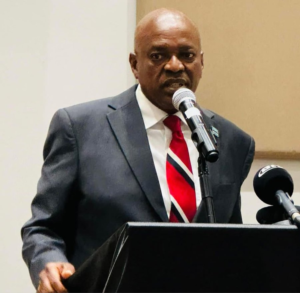MEDIA BAN AT GUKURAHUNDI HEARINGS SPARKS DEBATE ON JOURNALISM’S PAST AND PRESENT

In an unexpected move, the National Chiefs’ Council of Zimbabwe, led by Deputy President Fortune Charumbira, has announced a ban on journalists from attending public hearings on the Gukurahundi genocide. This announcement was made during a media awareness workshop in Bulawayo, organized by the Office of the President and Cabinet in collaboration with the Ministry of Justice. The workshop aimed to prepare for the traditional leaders’ public hearings on the genocide that occurred between 1982 and 1987, during which an estimated 20,000 people were massacred.
Charumbira’s statement emphasized the need to create a comfortable environment for witnesses and victims to speak freely, without fear of police, state security forces, or media presence. This move has sparked a heated debate among journalists and media organizations, some of whom were not invited to the workshop, raising concerns about the transparency and inclusivity of the process.
Government spokesman Nick Mangwana stressed the government’s desire for media involvement in the reconciliation process but highlighted the media’s dual nature as a potential source of harm if not handled responsibly. The tension between the need for media freedom and the protection of victims’ dignity has led to demands for a review of the decision to ban journalists from the hearings. Critics argue that this ban not only violates media freedom but also suggests an attempt to control the narrative surrounding the sensitive issue of Gukurahundi.
The workshop resulted in a heated discussion between journalists and chiefs, with journalists firmly rejecting the media blackout. It was eventually agreed that journalists covering the hearings must undergo conflict-sensitive reporting training and receive specific accreditation, a decision criticized as unconstitutional and manipulative.
This controversy brings to light the complex role of journalists during the Gukurahundi genocide. State-controlled media at the time played a significant role in reporting the events, often in a manner that downplayed or justified the violence. This has led to a reevaluation of the media’s role as both a potential enabler of atrocities and a crucial instrument for truth-telling and reconciliation.
The ban has also reignited discussions about the responsibility of journalists in reporting on sensitive issues. The history of media involvement in the Gukurahundi genocide serves as a stark reminder of the power of the press to shape narratives and influence public perception. As Zimbabwe seeks to confront and heal from its dark past, the role of the media remains a contentious and critical issue.
Despite the controversy, the commitment to addressing the Gukurahundi genocide through public hearings and discussions signifies a step forward in Zimbabwe’s journey towards reconciliation. However, the success of this process will depend on a delicate balance between protecting the dignity of victims and ensuring the principles of transparency, accountability, and media freedom are upheld.
As the hearings proceed, the debate over the media’s role highlights the ongoing challenges faced by journalists in navigating the complexities of reporting on historical traumas. It underscores the importance of responsible journalism in fostering understanding, healing, and unity in the aftermath of conflict. The outcome of this debate and the subsequent public hearings will not only shape the narrative of Gukurahundi but also set a precedent for how societies confront and reconcile with their past atrocities.



